Rinsing (aka washing) produce is often necessary to remove soil, and by cooling produce (removing field heat) it can also increase quality and shelf life. But improper management of produce “wash” water is a significant food safety risk, because dirty water can contaminate all produce dunked in it. With frequent water changes, multiple rinses and/or sanitizer is added to wash water, however, the risk of spreading human pathogens via cross-contamination can be minimized.
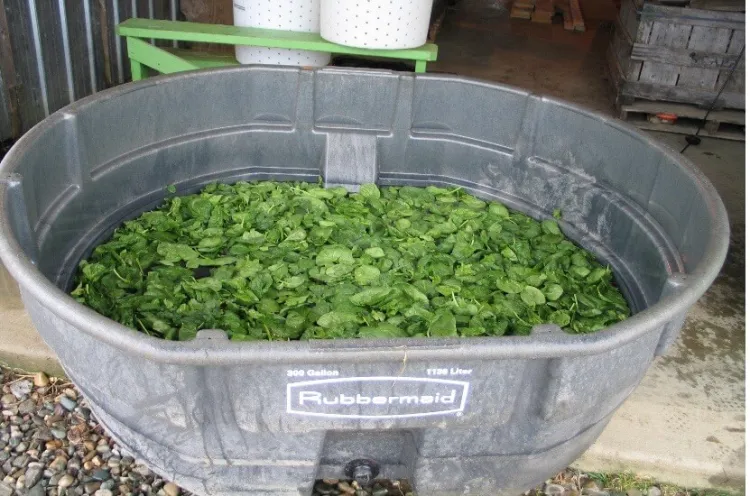
Design Goals
- Rinse off dirt and grit. Gentle agitation dislodges dirt and grit from produce and allows it to settle to the bottom of dunk tank.
- Minimize cross-contamination. Reused dunk tank water can contain human pathogens that may contaminate produce. there are several practices to minimize this contamination risk
- Lower produce temp (if needed). Relatively cool water can effectively chill produce, prevent dehydration and increase shelf life. But caution should be taken to avoid soaking warm pulpy produce (e.g. melons, cukes) in cold water.
Design Elements
- Gentle agitation can be manual (with hands or net for smaller scale), or automated (bubblers or flumes for larger scale). Water depth should be at least 12 inches (or a long shallow “trough” or flume o) to allow suspended grit to settle.
- Employees are training when to wash produce, or not. Avoiding unnecessary washing can reduce produce safety risks and save time and resources.
- Water is changed frequently enough (and tanks/sinks rinsed of sediment) to minimize suspended solids and lower cross-contamination risk (This frequency is determined by each growers situation (e.g. crop mix and volume, soil type, tank number and volume). A standard operating procedure (SOP) guides employees on consistent changing of dunk tank water based on volume of produce washed, appearance (turbidity) of water, and/or level of sanitizer measured. Water turbidity alone is not a measure of cross-contamination risk (i.e. don’t use appearance alone as basis for changing water).
- If sanitizer is used in dunk tanks:
- Only EPA-labeled products* are used as sanitizers. Sanitizers are an effective tool for reducing risk of cross-contamination in dunk tanks. (*labelled for use in produce wash-water to kill human pathogens--e.g. Tsunami 100, Germicidal bleach)
- A dispenser is used to safely and accurately add the proper quantity of sanitizer to the dunk tank, and protective equipment is worn by employees.
- Test strips are used to measure sanitizer concentration in wash water initially and over time, to monitor the decline in concentration that occurs when washing produce.
- If no sanitizer is used, multiple dunk tanks providing sequential multiple rinses are used, (versus a single rinse dunk tank). Two or three rinses in succession helps reduce the overall risk of cross-contamination.
- Caution is used if dunk water is used to remove field heat from pulpy produce (e.g. melons, peppers). Warm produce submerged in cold dunk water can cause infiltration of tank water into contracting air spaces under the skin . This risk can be minimized by reduction of water-to-pulp temperature difference (<10 F is best), or dunking time (avoid longer soaking); or risk can be avoided altogether with alternative methods of removing field heat (such as forced air cooling).
Benefits
- Customer satisfaction. No one likes a gritty salad mix.
- Product quality. Rinsing (and possibly use of sanitizer) can increase product shelf life.
- Food safety risks are reduced. No grower wants to get their customers sick.
Photos
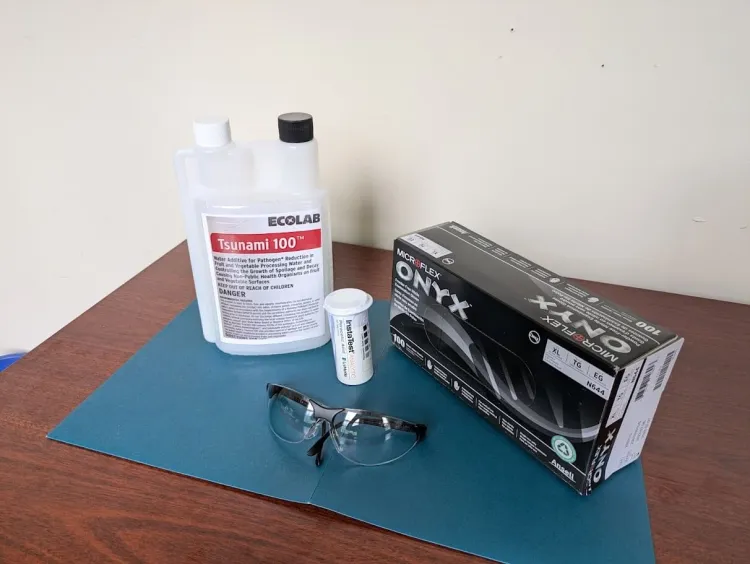
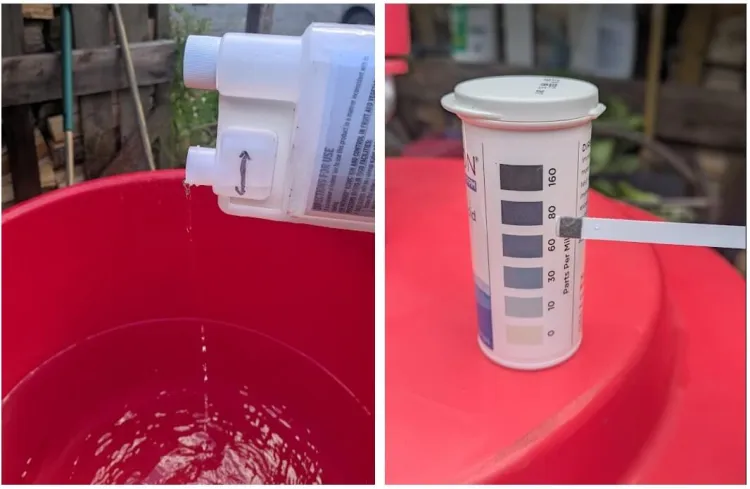
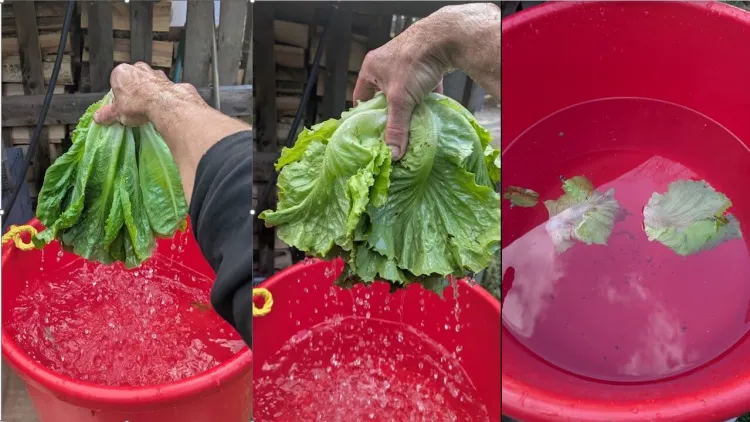
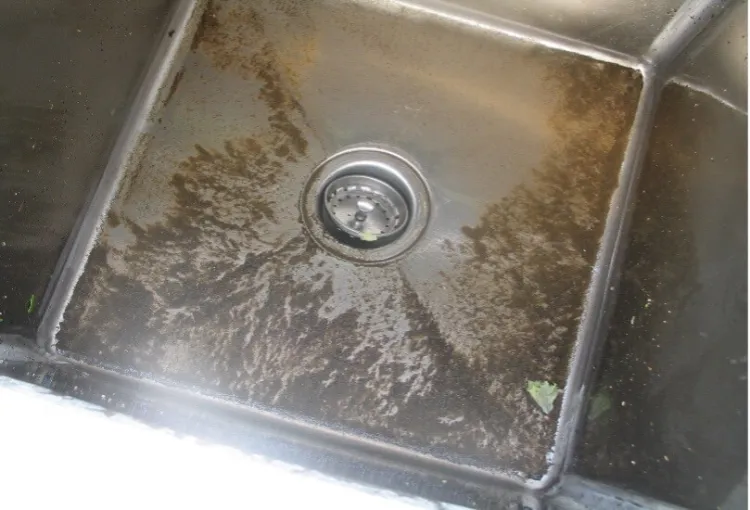
Related Resources
- Vegetable wash sinks, tanks, tubs, and basins
- Safely dispensing sanitizers (UVM Extension Agricultural Engineering)
- Sanitizer dosing calculator (UVM Extension Agricultural Engineering)
- EPA-Labeled Sanitizers (Produce Safety Alliance)
- Forced Air Cooling on the Farm (UVM Extension Agricultural Engineering)
Authors: Hans Estrin and Vern Grubinger, UVM Extension
This work is supported by the Food Safety Outreach Program Name, project award no. 2023-70020-40688, from the U.S. Department of Agriculture’s National Institute of Food and Agriculture. Any opinions, findings, conclusions, or recommendations expressed in this publication are those of the author(s) and should not be construed to represent any official USDA or U.S. Government determination or policy.
